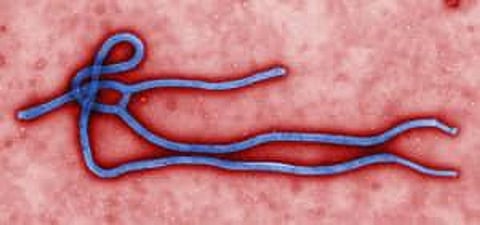
- Home
- न्यूजग्राम
- NewsGram USA
- India
- World
- Politics
- Entertainment
- Culture
- Lifestyle
- Economy
- Sports
- Sp. Coverage
- Misc.
- NewsGram Exclusive
- Jobs / Internships

By Gaurav Sharma
Prime Minister Narendra Modi today signed a peace accord with the Naga insurgents in what was a landmark deal agreed upon almost 40 years after the failure of a similar treaty that was inked in Shillong in 1975.
Nagaland and other north-eastern states have been mired in violence ever since the Shillong Accord led to the splintering of the Naga rebel movement which started in the mid-twentieth century.
Naga rebel movement- The Beginning
The Naga rebel movement began a day before India's independence on 15th August 1947. 17 major tribes and 20 major sub-tribes, although speaking different languages, united under the framework of the Naga National Council (NNC) and voiced boisterous calls for an independent Nagaland, a demand for which they vowed to fight tooth-and-nail.
Angami Zapu Phizo, NNC's leader held a referendum in May 1951 claiming the 99 per cent of Nagas had voted for a sovereign Nagaland, a notion that the Indian government outrightly dismissed.
The following year NNC boycotted the general elections and instead launched a secessionist coup in what is now the oldest insurgency movement in India.
What began as sporadic attacks on police outposts and villages for funds and arms soon metamorphosed into an underground military movement known as Naga Federal Government(NMG) with its own Naga Federal Army (NFA).
To ameliorate the violent outpouring, the Indian government imposed the Armed Forces Special Powers Act (AFSPA) on 11 September 1958, deeming the Seven sister states as "disturbed territory".
In 1963, Assam was divided and Nagaland was declared an independent state. Peace was on the horizon when, in 1967, the NNC launched a paroxysm of violence on the Army units posted in the region.
Subsequently, the NMG and NFA were declared "unlawful associations" and a crackdown was launched by the Indian army on the rebels. In 1975, the Shillong Accord was signed between the Centre and the NNC, under which the rebel group accepted the Indian constitution and agreed to surrender their weapons.
Defining the turbulent nature of federalism in the north-east, the NNC fractured into another terror group called the National Socialist Council of Nagaland (NSCN), a coterie of 140 activists who repudiated the Shillong Accord and refused to lay down the arms.
The prominent leaders under the group formed in 1980 included Thuengaling Muivah, Isak Chisi Swu and SS Khaplang.
The NSCN further bifurcated into the Konyak (IM faction) and the Tangkhul (K faction) in 1988. SS Khaplang and Khole Konyak headed the Konyaks whereas Isak Swu and Muivah led the Tangkhuls. The NSCN (IM) was formed with Angami Zapu Phizo' s daughter as the Vice-Chairman of the organization.
NSCN's (IM) claims
The NSCN (IM) claims that the Naga region was never a part of the Indian union and hence its fight for an independent Nagaland cannot be termed as a "secessionist" movement.
Furthermore, it expounds the theory that Nagaland was never "inherited" from the British and that the then Prime Minister Jawaharlal Nehru was wrong in asserting such a notion.
Its demand is forthright in that the Naga-dominated areas of the districts of Senapati, Ukhrul, Tamenlong and Chandel should be made part of "Greater Nagalim", a command which has been strongly resisted by the neighbouring states of Arunachal Pradesh, Manipur and Assam.
Meanwhile, the newly formed Naga Tribal Alliance has revolted against the NSCN (IM) backed Naga Hoba ( an outfit which professes to speak on behalf of the entire tribe) over the proposed reservations for Manipur-based Naga tribes.
What the deal portends
If the deal were to be passed in the Parliament, it holds the prospects of settling amicably the longstanding bitter standoff between the government and the insurgents.
The north-eastern states would benefit, particularly Nagaland and Manipur as they would open up to investments and development projects both from the Indian government as well as from international investors.
Rampant lawlessness including ghory activities such as kidnapping, gun-running, extortions and murders (funded from China) would be checked. Diplomatic ties with Myanmar would drastically change. Overall, India Act Policy would get a much needed boost.
Current state of affairs
To ensure peace and stability in the region, not only will the government have to deal with NSCN (IM) but will also have to address issues raised by the NSCN (K faction), which in collaboration with Ulfa and other militant groups forms the United Liberation Front of West South-East Asia.
So far despite numerous attempts, the Indian government has failed to integrate Nagaland into the mainland, although officially its stands as a part of the Indian union. The area is known to be restive with cases of murders and violence commonly reported from the region.
Apart from fighting a pitched battle for a separate state, the NSCN (IM) runs a parallel taxation structure under which businessmen, contractors and workers are levied hefty charges.
Dimapur, the largest state in Nagaland is witness to murders in broad daylight. On May 6, a mob broke open into Dimapur Central Jail and lynched a man accused of rape. The ghastly scenes were broadcast on media channels and raised a furore over the deteriorating law-and-order situation in the 'falcon capital of the world'.
In view of such an abhorrent administrative in the north-east, the present peace deal can bring much succour to the escalating epidemic of violence, particularly when it is believed that the agreement will not involve redrawing of the state's borders.
The battle for peace, far from being over, has only begun. Stability will depend on the ability of the Indian government to bring all stakeholders, including rival insurgents on board and striking a consensus before violence flares-up, again.
